
Our approach to sustainability is about delivering impact faster with more focused, urgent and systemic action across our four sustainability priorities: climate, nature, plastics and livelihoods.
In the fight against climate change, we're focusing our efforts on where we can make the biggest impact:
- Advocating for widescale change
- Helping our suppliers take climate action
- Maintaining deforestation-free sourcing of key commodities
- A regenerative approach to farming
- Rethinking our products and ingredients
- Acting on packaging
- Cutting transport emissions
- Cleaner, smarter energy in our operations
Climate reality – it’s time to deliver
Climate reality – it’s time to deliver
To move towards net zero, our immediate priority is clear: to make deep cuts in absolute Scope 3 greenhouse gas emissions by 2030.
Guided by our Climate Transition Action Plan (PDF 7.98 MB), we're tackling our emissions sources while continuing to grow our business. This isn't easy, but we are already seeing progress.
14%reduction in Scope 3 forest, land and agriculture emissions since 2021
8%reduction in Scope 3 energy and industrial emissions since 2021
Building supplier climate capability
Building supplier climate capability
Over half of the emissions in scope of our net zero ambition come from raw materials and ingredients.
Our Supplier Climate Programme enables key suppliers to move towards climate leadership.
This includes sharing carbon footprint data for the materials we buy and working with us on decarbonisation opportunities.
181suppliers participated in our Supplier Climate Programme in 2024
Protecting forests
Protecting forests
Around a quarter of our emissions in scope of our net zero ambition come from forests, land and agriculture.
In 2024, 97% of our order volumes for palm oil, paper and board, tea, soy and cocoa were deforestation-free.
We’re using infrastructure and technology and working with suppliers and smallholder farmers to maintain our deforestation-free sourcing.
And we’re pushing for policies and regulations that conserve and restore forests.
€218 millioninvestment since 2021 to directly source deforestation-free palm oil
Scaling regenerative agriculture
Scaling regenerative agriculture
We’re investing in regenerative agriculture practices – a way of farming that can help reduce emissions, build resilience, and regenerate nature.
To help farmers adopt them more easily, we’re running capability building programmes, while calling for supportive regulations and financial incentives.
We also want to see an industry-wide approach to data handling and reporting on regenerative agriculture projects.
130,000 hectares of land covered by our regenerative agriculture projects since 2021
Where climate meets science
Where climate meets science
Using our expertise in science and innovation, we’re working with partners to reformulate products using lower-emission ingredients, without compromising on product performance.
One of our biggest priorities is developing alternatives to fossil-fuel-based chemical ingredients in our laundry and cleaning products.
We’re working with suppliers to scale up solutions like lower-emission soda ash.
We’re also pushing the chemicals industry to transform, supported by government policies that would unlock a transition to renewable and recycled feedstocks.
$120 millionjoint investment in biotechnology to develop an alternative plant-based ingredient to lather and lift dirt
Decarbonising our operations
Decarbonising our operations
Our deep cuts in Scope 1 and 2 emissions show what we can achieve with focus and urgency.
By prioritising renewable electricity and energy efficiency, we're making real progress.
72%reduction in Scope 1 & 2 greenhouse gas emissions since 2015
Now, we’re moving to renewable heat sources – guided by our pioneering ‘WEF lighthouse’ factories.
And we’re part of a business movement calling on governments to accelerate the clean energy transition globally.
A business imperative
Climate change isn't just a significant threat to people and planet - it’s a material risk to our business. We’ve set more ambitious climate targets and identified clearer actions to respond to this challenge.
We firmly believe that doing more, faster, will strengthen our business.
There are no quick fixes, especially given the extent and complexity of our value chain. Governments, regulators and industry must move further and faster in creating the enabling environments needed for companies like ours to meet climate targets.
Our targets
We have three near-term science-based targets to reduce our emissions:
Our value chain: reduce absolute Scope 3 forest, land and agriculture (FLAG) GHG emissions[a] by 30.3% by 2030 from a 2021 baseline
Our value chain: reduce absolute Scope 3 energy and industrial GHG emissions[b] by 42% by 2030 from a 2021 baseline
Our operations: reduce absolute operational GHG emissions (Scope 1 & 2) by 100% by 2030 from a 2015 baseline
These targets and our 2039 net zero ambition are set out in our updated Climate Transition Action Plan (PDF 7.98 MB), which was supported by over 97% of shareholders at our 2024 AGM.
See our progress in our Annual Report and Accounts (PDF 16.16 MB).
-
More ambitious near-term Scope 3 targets
With 99% of the emissions in scope of our net zero ambition arising outside our operations in 2023, we’re shifting our focus to our wider value chain. We’re engaging with suppliers and partners to encourage the critical climate action needed this decade.
Our two Scope 3 science-based targets, approved by the Science Based Targets Initiative, are guiding us to reduce absolute emissions in our value chain over the next few years. These distinguish between energy and industrial emissions and ones linked to forest, land and agriculture, which need different approaches. Together they represent a 39% absolute reduction in total targeted Scope 3 emissions.
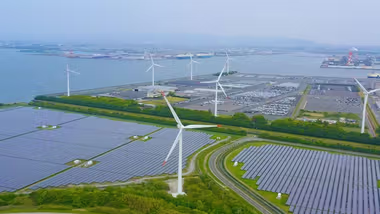
Advocating for widescale change
To help us move faster towards our climate targets and our net zero ambition, we’re calling for policies that support business action and create a level playing field. This will help us make faster progress without putting our business at a competitive disadvantage.
Our actions include pushing national governments to:
- Align with business on climate strategies to ensure plans are investible
- Strengthen their targets and plans to reduce emissions
- Support renewable energy, forest protection, regenerative agriculture and alternative chemicals
- Make sure carbon is priced appropriately to deliver the Paris Agreement
- Encourage the evolution of the GHG Protocol Standards to incentivise action along value chains
It’s only through working with governments, regulators, and other businesses that we can overcome barriers and take faster action where it’s needed most. To safely limit global warming to 1.5°C and stay competitive in the future, we have no time to waste.
To learn more about our climate policy engagement, including a review of our industry associations, see our Climate Policy Engagement Review.

Our Supplier Climate Programme
This programme brings tools and expert support to key suppliers of raw materials, ingredients and packaging to accelerate their climate journeys. We’re focusing on suppliers whose materials contribute most to our climate impact – from chemicals and packaging to third-party manufacturers.

Progress through data
We’re working alongside other businesses in the Partnership for Carbon Transparency to standardise the collection of supplier data. This gives us a more accurate understanding of our combined impact. We’re using this data to jointly track emissions reduction and to develop new partnerships for decarbonisation.

Advocating for renewable energy
As well as partnering with our suppliers to buy renewable electricity, we’re pushing for a faster global transition to renewable energy. This involves working with others through RE100 and Fossil to Clean, as well as calling on governments to enable faster change.


Empowering, innovating, investing
We’re empowering suppliers and smallholder farmers to embrace deforestation-free practices. We’re also using cutting-edge technology for more traceability and transparency. And since 2021, we‘ve invested €218 million in our oleochemicals plant in Indonesia to source palm oil more directly.

Pushing for fairer market conditions
We’re also working with governments to create fairer market conditions for buying certified commodities from accredited sources.
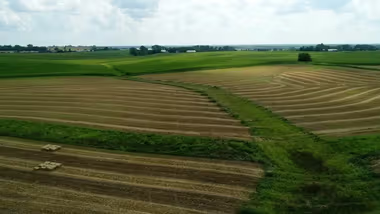
A regenerative approach to farming
We’re working with our suppliers to introduce regenerative agriculture projects. These keep the soils that grow our ingredients healthy and help to sequester carbon dioxide. And they make our supply chains more resilient to the impacts of climate change, such as floods and droughts.

Scaling our projects
We’re working to introduce regenerative agriculture projects on 1 million hectares of agricultural land by 2030. By the end of 2024, we had implemented regenerative agriculture practices across 130,000 hectares globally, and our Foods business aims to cover 550,000 hectares by 2027.
Our projects aim to improve soil health, sequester carbon and reduce water use, while enhancing biodiversity. We’re targeting the crops that have the biggest land footprint in our supply chain, from soybean and rapeseed oil for Hellmann’s, to vegetables and rice for Knorr.

More action on the ground
We’re helping farmers build their capabilities, and pooling resources with other businesses who share our supply chains. We’re collecting data on soil carbon and farming practices to better manage our projects. And we’re calling on governments to support farmers through better access to finance, while working with others to grow the regenerative agriculture movement.
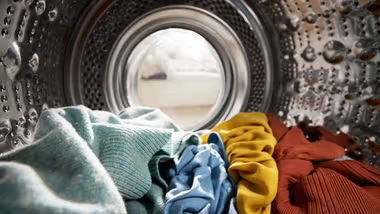

Innovating at scale
We’re partnering with innovators and suppliers to find alternatives to fossil-fuel-based chemicals in our laundry and cleaning products.
- We’re using biotechnology to develop plant-based ingredients
- We’re partnering with a tech start-up to explore renewable carbon
- We’re working with chemical suppliers to produce and scale synthetic soda ash

Collaborating for change
So that we can move faster on alternatives to chemical ingredients, we’re pushing governments for more integrated national policies that support climate-focused solutions, such as surfactants made from renewable feedstocks. At the same time, lower-carbon synthetic soda ash can only be produced with cooperation between end-users, manufacturers and the fertiliser industry. That’s why, in India, we’re leading a working group aiming to move the chemical industry towards net zero.
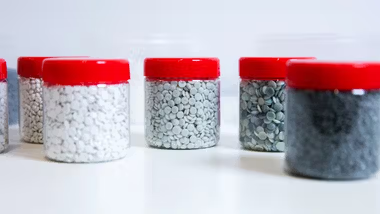

Changing throughout our value chain
We’re taking steps to reduce the emissions created both when plastic is made and when it goes to landfills and incinerators.
- We're finding ways to remove plastic from our packaging by designing new product formats
- We're moving from virgin, fossil-fuel-derived materials to recycled and renewable feedstocks
- We're working with others to push for better recycling and collection infrastructure

Advocating for a Global Plastics Treaty
We need the rest of industry to move with us on this. That’s why we’re working to shape much-needed policies and regulations, and we're a leading voice in the Business Coalition for a Global Plastics Treaty, which will change the world’s relationship with plastic.


The start of our journey
Over the long term, we’ll be moving to electric or hydrogen-fuelled trucks and encouraging our suppliers to do the same.
We’re already using electric vans in some places, but vehicles and charging infrastructure aren’t yet available at scale. That’s why we’ve focused our efforts on maximising efficiency, filling containers and reducing journeys travelled.

Alternative fuels
We’ve started transitioning some of our fleets to sustainable biofuels in some of our biggest markets, including the US, UK and Netherlands. This can create a 70% reduction in carbon dioxide emissions compared to fossil fuels. At some sites, we’ve also been testing hydrogenated vegetable oil derived from cooking waste.
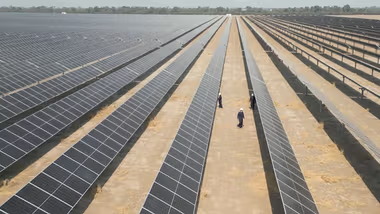
Cleaner energy in our operations
How we power and heat our business is in our direct control. We’ve successfully transitioned to renewable sources for much of the electricity used at our sites. Alongside becoming more energy efficient, this has been our biggest driver in reducing our Scope 1 and 2 emissions by 72% since 2015.

Transitioning to renewable thermal energy
To continue to transition to renewable energy sources, we’re focusing on the heat used in our production processes. Given the scale and diversity of our manufacturing network and various market complexities, this isn’t an easy task.
We’re continuing to drive energy efficiency, for example by using heat exchangers to recover heat. And we're electrifying some of our thermal processes using equipment such as heat pumps and electric boilers.
We’re also using biofuels at some of our sites, and increasingly biomethane, in line with our sustainable sourcing policies.

Powering our factories with renewable electricity
In 2024, 85% of the electricity in our offices, factories, R&D centres, and warehouses was renewable. To reach 100%, we’re focusing our efforts where renewable electricity isn’t yet available from local suppliers. In these locations we’re buying certificates for renewable electricity generated in neighbouring countries.
Another one of our biggest challenges is finding alternatives to the combined heat and power units – which generate electrical and thermal energy – in our factories that run on natural gas. For these we’re starting to use more renewable sources of energy such as biomethane and continue to drive energy efficiency and electrification.

Working together to speed the transition
As an early mover on renewable energy, we were one of the first companies to join RE100 and signal our commitment to 100% renewable electricity. Now, at international climate negotiations, and as part of We Mean Business’ Fossil to Clean campaign, we’re calling on governments to speed up the clean energy transition and to phase out fossil fuels globally.
Our other sustainability priorities

Nature
The world – and our business – needs resilient natural and agricultural ecosystems to thrive. We’re committed to contributing to the protection and regeneration of nature, within and beyond our value chain.

Plastics
We’ve been working hard to create a circular economy for plastic packaging for a number of years. We’ve learnt that transformation takes time. Given the size of this challenge, we’re using our innovation capabilities to find new, scalable solutions.

Livelihoods
The impacts of inequality go far beyond income – to health, human rights and economic growth. So we’re working to improve the livelihoods of people in our global value chain.
FLAG emissions from purchased goods and services (associated with ingredients).
Energy and industrial emissions from purchased goods and services (associated with ingredients, packaging), upstream transport and distribution, energy and fuel-related activities, direct emissions from use of sold products (associated with HFC propellants), end-of-life treatment of sold products, and downstream leased assets (associated with ice cream retail cabinets).




